Search the Special Collections and Archives Portal
Search Results
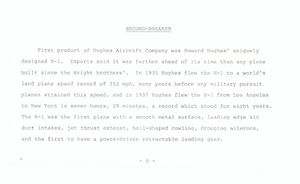
Photograph of Hughes H-1 Racer, Image 002
Date
Description
Image
Howard Cannon Papers
Identifier
Abstract
The Howard Cannon Papers (1958-1988) contain the personal, administrative, and legislative papers of Howard W. Cannon, U.S. Senator from Nevada between 1959 to 1983. The collection primarily pertains to Cannon's time in office from the 86th Congress in 1959 to the 97th Congress in 1983. Materials include correspondence, speech transcripts and supporting research material, press releases, reports, memoranda, newspaper and magazine clippings, and Senate voting records. The collection also includes constituent correspondence and casework related to legislative issues such as foreign relations, social security, veterans, tax reform, labor, aviation, nuclear testing and waste, civil rights, and environmental protection.
For a detailed inventory, please contact Special Collections and Archives (special.collections@unlv.edu).
Archival Collection
Hughes Aircraft Company Weapons System Publications
Identifier
Abstract
The Hughes Aircraft Company Weapons System Publications (approximately 1965-2011) contain brochures, booklets, photographs, and illustrations of the AWG-9/Phoenix Air Superiority Weapon Control System developed by Hughes Aircraft Company Aerospace Systems Division based in California. The collection contains photographs of various aircraft, as well as a Supersonic Naval Ordnance Research Track (SNORT) test at the Naval Ordnance Test Station near China Lake, California.
Archival Collection
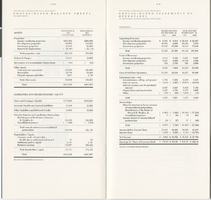
Hughes Corporation third quarter report, 1990
Description
Minutes from Temple Beth Sholom Board of Directors meetings, June 1987 - May 1988 (1 of 2)
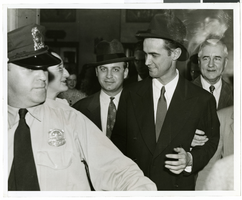
Photograph of Howard in Washington, D. C., July 21, 1938
Date
Archival Collection
Description
Image
One of the two 34-ton wing sections of Howard Hughes's HK-1 Hercules is put on house-moving dollies in Culver City, California, before beginning the 28-mile journey to Los Angeles Harbor, 1946 June 12
Level of Description
Archival Collection
Collection Name: Howard Hughes Public Relations Photograph Collection
Box/Folder: Folder 20
Archival Component
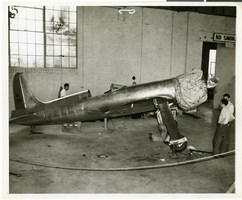
Hughes' H-1 Racer aircraft, circa 1937
Date
Archival Collection
Description
Image

Photograph of the Hughes H-1 Racer, circa 1937
Date
Archival Collection
Description
Image
Hughes HK-1 Hercules photographs, 1942-1947
Level of Description
Scope and Contents
Materials contain photographs of the HK-1 Hercules, otherwise known as the "Spruce Goose" or the "Flying Boat," from 1942 to 1947. The photographs primarily depict the construction, transportation, and storage of the plane, but also include photographs of the first and only test flight of the HK-1 above Los Angeles Harbor in 1947. Howard Hughes designed the HK-1 as the world's largest plane, capable of transporting large quantities of U.S. military hardware and personnel. In 1947, under the program's new designation H-4 Hercules, Hughes had the plane transported from his factory in Culver City, California to Los Angeles Harbor. On November 2, he piloted the plane during its only test flight. The U.S. Air Force abandoned the controversial project, and Hughes was called to testify before the Truman Committee of the U.S. Senate to justify the use of government funds on a program that never succeeded.
Archival Collection
Collection Name: Howard Hughes Professional and Aeronautical Photographs
Box/Folder: N/A
Archival Component
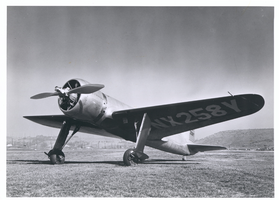
Photograph of Hughes H-1 Racer, November 1, 1945
Date
Archival Collection
Description
Image
